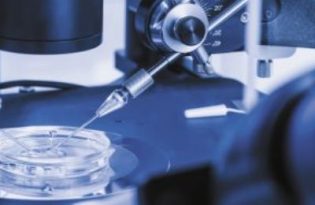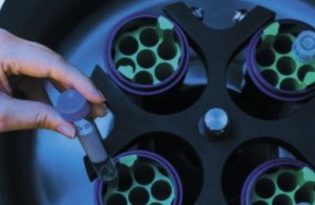Preparing for Pregnancy
Get in touch with us about Preparing for Pregnancy today
Making the decision to start a family is one of life’s biggest decisions. To give yourself and your partner the best possible chance, there are little steps along the way to help prepare for pregnancy and a healthy baby.
Research shows that diet, exercise, smoking, and other lifestyle factors have an impact on fertility, so the following information is a good starting point for you to see what changes you can make – and what action you can take – to set you on the right path.
Healthy Diet
Incorporate a balanced healthy diet into your lifestyle, which includes daily serves of fruit and vegetables and good quality protein found in lean meat, fish, eggs, and pulses. Complex carbohydrates, whole grains, and plenty of calcium (preferably in the form of lowfat dairy products) are also recommended.
Caffeine
Evidence of the effects of caffeine are inconclusive. Safe guidelines to adhere to are both men and women need to aim for <200mg of caffeine a day, which equals a maximum of 1-2 coffees or glasses cola/energy drinks, or 2-3 teas, and be mindful of the caffeine in chocolate. If you need to cut down, do so slowly to reduce the symptoms. Substituting for decaffeinated options and herbal teas can sometimes assist.
Weight
Weight issues are important for both men and women when considering fertility. Obesity in both males and females is associated with reduced fertility, increased pregnancy loss and complications. If you are overweight, your body mass index (BMI) will be greater than 25. The closer to a BMI of 25, the better, and remember any health changes to improve your lifestyle will improve your fertility.
Women who are underweight (BMI less than 20) are also at risk of reduced fertility. If you are underweight and your period cycles are long or irregular, a small weight gain may be beneficial, or cut back on strenuous exercise.
Women with a BMI greater than 30 have decreased embryo implantation rates and increased miscarriage. Women with a BMI greater than 35 face significant risks with egg-retrieval if undergoing IVF, and associated pregnancy complications.
There is evidence of men with an increased BMI also have reduced fertility. Obesity in men reduces sperm quality, increasing DNA fragmentation, reducing the chance of implantation and ongoing pregnancy.
Heat
Both men and women should avoid excessive heat from baths, saunas or spas, when trying to conceive and during pregnancy. Men should also avoid any other situations where their scrotal area is unable to keep cooler than the rest of the body. Keep laptops on the desk and off the lap.
Fertility and the phases of the Menstrual Cycle
There are many methods used to predict ovulation. These include measuring changes in temperature, saliva, urine and vaginal mucus. However, due to a number of external influences they are not always reliable.
Simple maths is often very helpful. Record your longest and shortest menstrual cycle. The potential fertile time starts 16 days before the end of your shortest cycle and ends 12 days before the end of your longest cycle. There is also a reliable progesterone blood test that can be used to confirm ovulation.
There are a variety of fertility and ovulation apps available that can assist with gathering information about menstruation cycle length and likely fertile window.
Pap smear
It’s important to update your smear test if it is nearly due – and it’s better to have one a bit early than be due in the middle of a pregnancy and find out that you have an abnormality that needs attention.
Alcohol
Safe limit of alcohol intake in fertility treatment is not known. Therefore it is recommended that women should stop all alcohol while trying to conceive and during pregnancy. Men should aim to keep to current safe drinking guidelines – an average of 2 standard drinks per day with no more than 4 standard drinks in one session, and several alcohol free days each week.
Fitness
You will benefit from being fit prior to pregnancy. For women who are unfit, developing at least a moderate level of fitness is advisable. However it is also best to limit intense or high impact exercise with no more than 4 hours of high intensity exercise being recommended per week.
Men should also aspire to a reasonable level of fitness.
Keeping active is important for a healthy lifestyle and there are significant benefits for women who are fit prior to pregnancy.
Emotional Wellbeing
Having a calm and positive state of mind improves your emotional health and wellbeing – and your chances of a successful pregnancy. Minimising stress or changing the way you handle stressful situations is an important consideration when trying to get pregnant. Fertility Tasmania can refer you to our qualified counsellor who has extensive therapeutic experience who have specialised skills and knowledge in the field of infertility. You can access our counsellor at no added cost if you are undergoing IVF treatment.
Alternative forms of stress relief including yoga, massage and acupuncture may be beneficial.
Medication & Drugs
There are certain drugs which have been found to adversely affect male fertility, including:
- Recreational/illicit drugs
- Antihypertensives
- Glucosamine
- Psychotherapeutic agents
- Chemotherapeutic agents
- Hormones (anabolic steroids)
- Antibiotics
- Herbal supplements
Effects can include:
- Direct gonadotoxic effects which means direct harm to the testes
- Alterations in the production and release of hormones
- Erectile dysfunction
- Direct effects on libido
Folate
Folate (at least 500 micrograms per day) supplementation is recommended at least 1 month prior to pregnancy and for 3 months into the pregnancy as this reduces the chance of the baby having a defect in the neural tube, such as spina bifida.
Folate can be taken alone or in combination with other pre-pregnancy supplements. Women with a BMI over 30 are advised to take up to 5mg of Folate daily. Please discuss this with your doctor.
Pre-pregnancy blood test
It is recommended that women preparing for pregnancy have a blood test to check their immunity to chicken pox (varicella). If you are not immune, you can be immunised to reduce the risk of infection in pregnancy.





